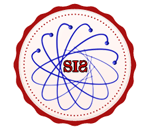


Google Scholar citation report
Citations : 5373
ASEAN Journal of Psychiatry received 5373 citations as per google scholar report
ASEAN Journal of Psychiatry peer review process verified at publons
| Journal Name | ASEAN Journal of Psychiatry (MyCite Report) | ||||
|---|---|---|---|---|---|
| Total Publications | 456 | ||||
| Total Citations | 5688 | ||||
| Total Non-self Citations | 12 | ||||
| Yearly Impact Factor | 0.93 | ||||
| 5-Year Impact Factor | 1.44 | ||||
| Immediacy Index | 0.1 | ||||
| Cited Half-life | 2.7 | ||||
| H-index | 30 | ||||
| Quartile |
|
- Anxiety Disorders
- Behavioural Science
- Biological Psychiatry
- Child and Adolescent Psychiatry
- Community Psychiatry
- Dementia
- Community Psychiatry
- Suicidal Behavior
- Social Psychiatry
- Psychiatry
- Psychiatry Diseases
- Psycho Trauma
- Posttraumatic Stress
- Psychiatric Symptoms
- Psychiatric Treatment
- Neurocognative Disorders (NCDs)
- Depression
- Mental Illness
- Neurological disorder
- Neurology
- Alzheimer's disease
- Parkinson's disease
Abstract
ROLE OF MOTIVATIONAL INSTRUCTIONS UNDER HYPNOTIC TRANCE IN ACADEMIC ACHIEVEMENT OF ELEMENTARY SCHOOL CHILDREN
Author(s): Arif Nadeem*, Sidra Ali* and Imran KhanThe role of hypnosis and motivation in academic performance has been under empirical investigation for a long. Therefore, the current quasi-experimental research was designed to explore the role of hypnosis and motivation in the academic achievement of Pakistani elementary school children. A sample of 90 students (50% boys and 50% girls) with an age range of 13-14 years, selected through stratified random sampling technique, was divided into three study groups (two experimental and one control group). One group was given motivational instructions under light hypnotic trance, the other was given the same instructions without induction of hypnotic trance and the third group was not given any intervention. Analyses of the data revealed that motivational instructions given under hypnotic trance as well as without hypnotic trance significantly improved the academic achievement of the participants. Gender differences were also evident as the academic achievement of the girls was significantly higher than that of the boys in the simple instructions group whereas the boys of the hypnotic instructions group performed significantly better than the boys of the simple instructions group. Implications of the study along with recommendations for future research were discussed


























